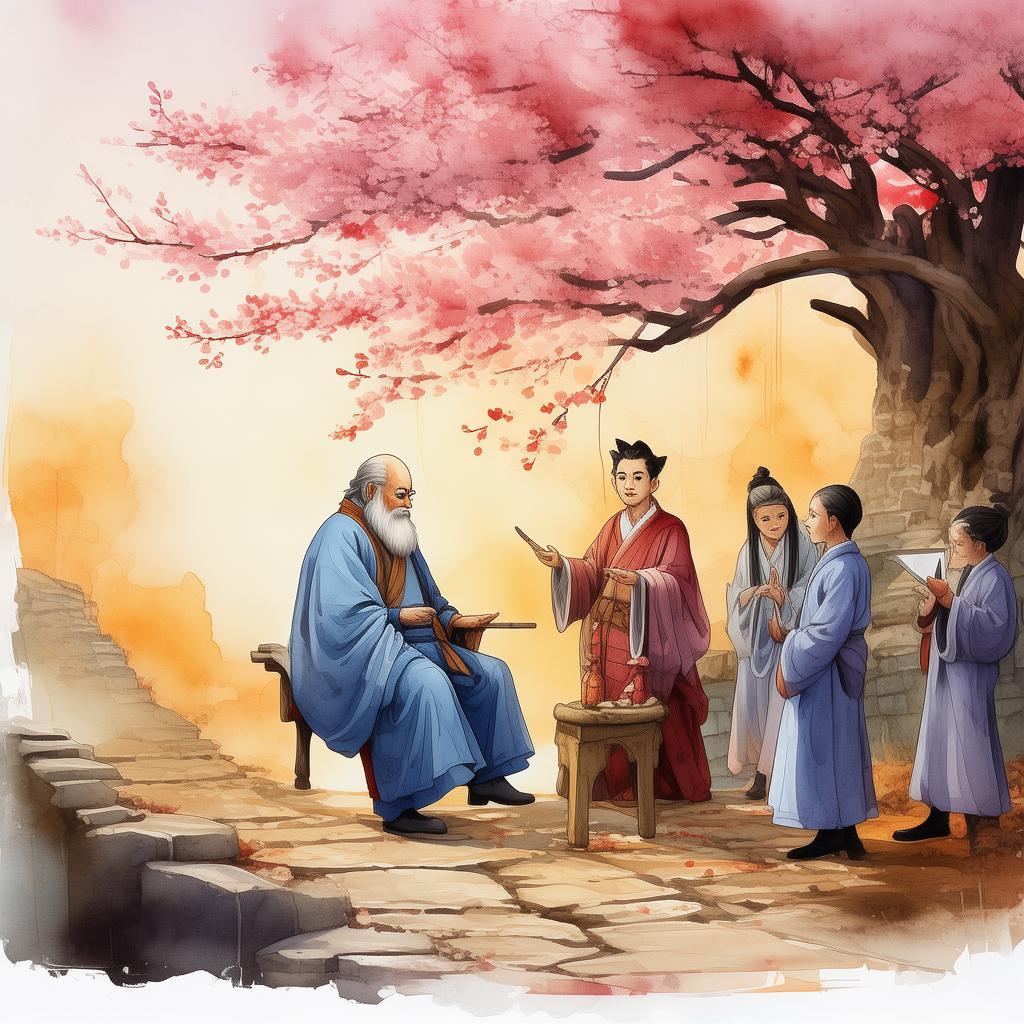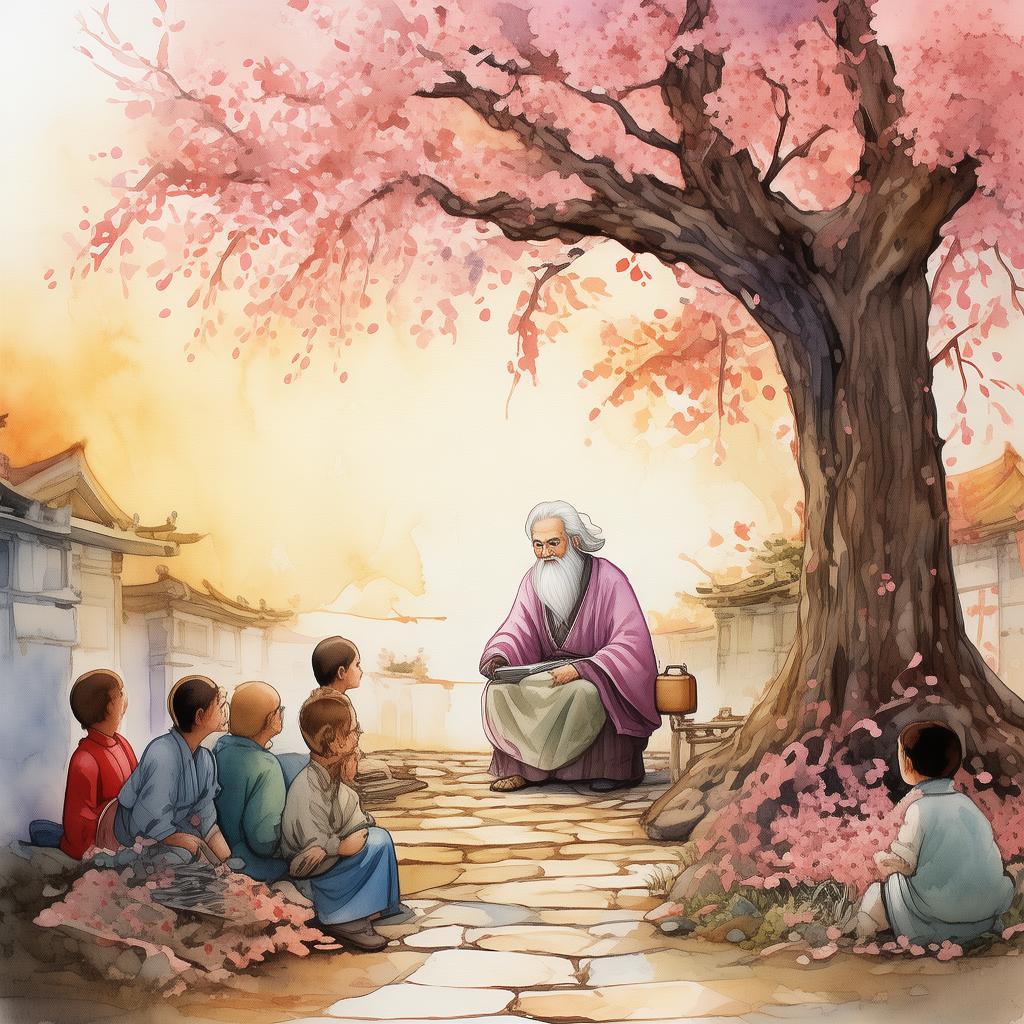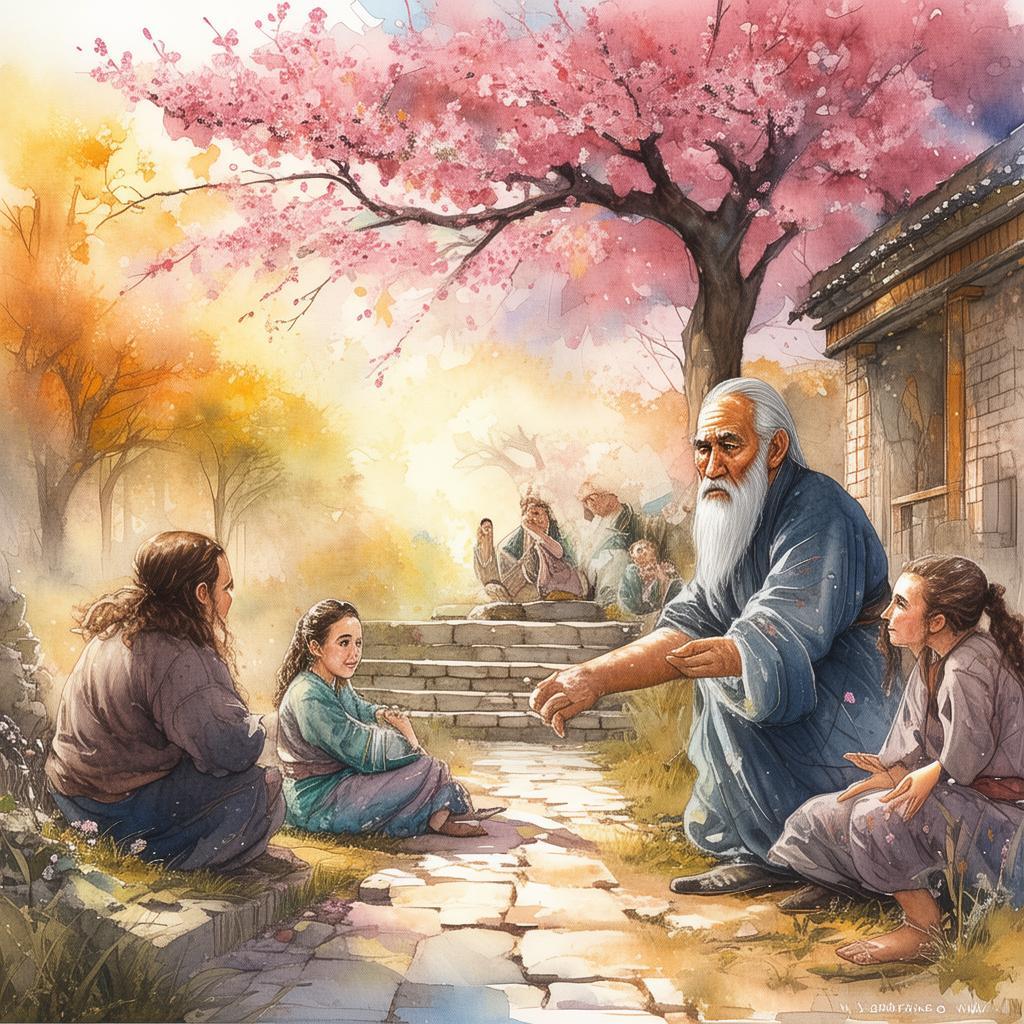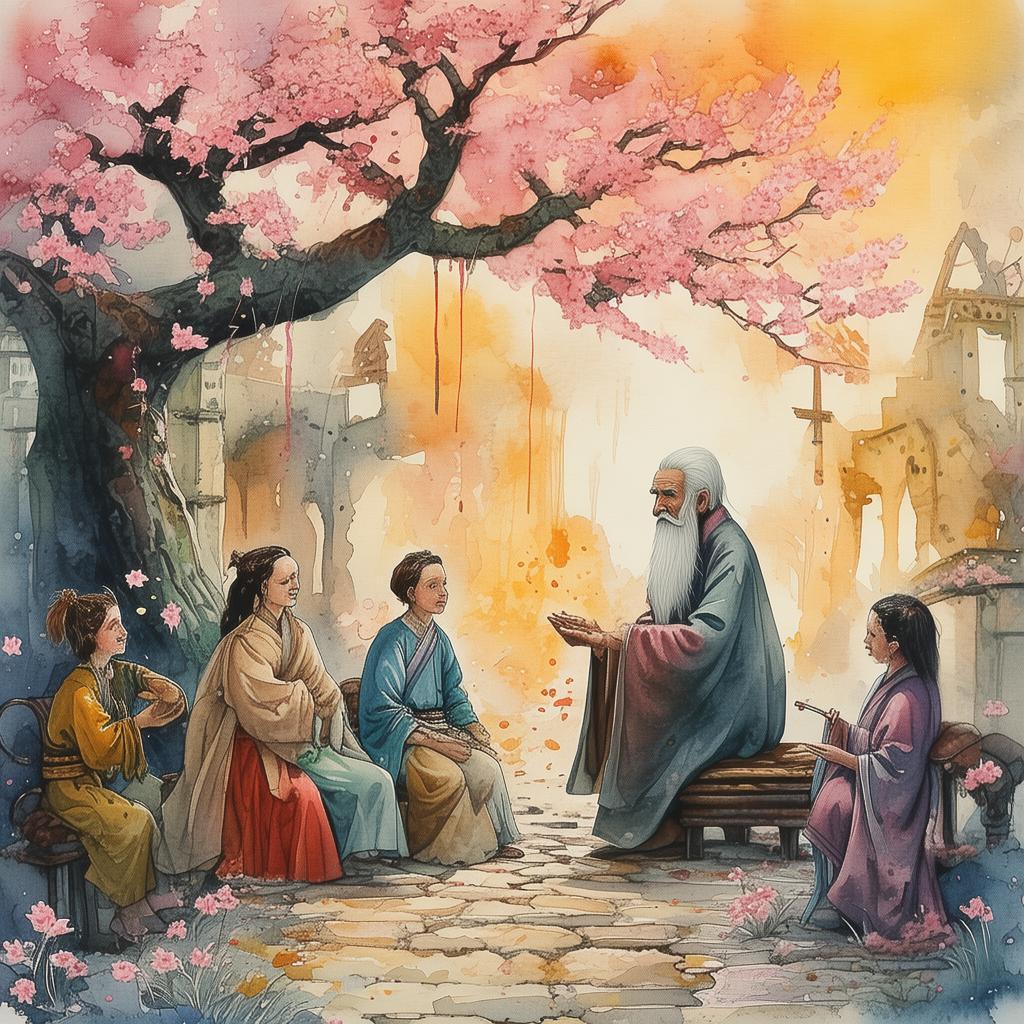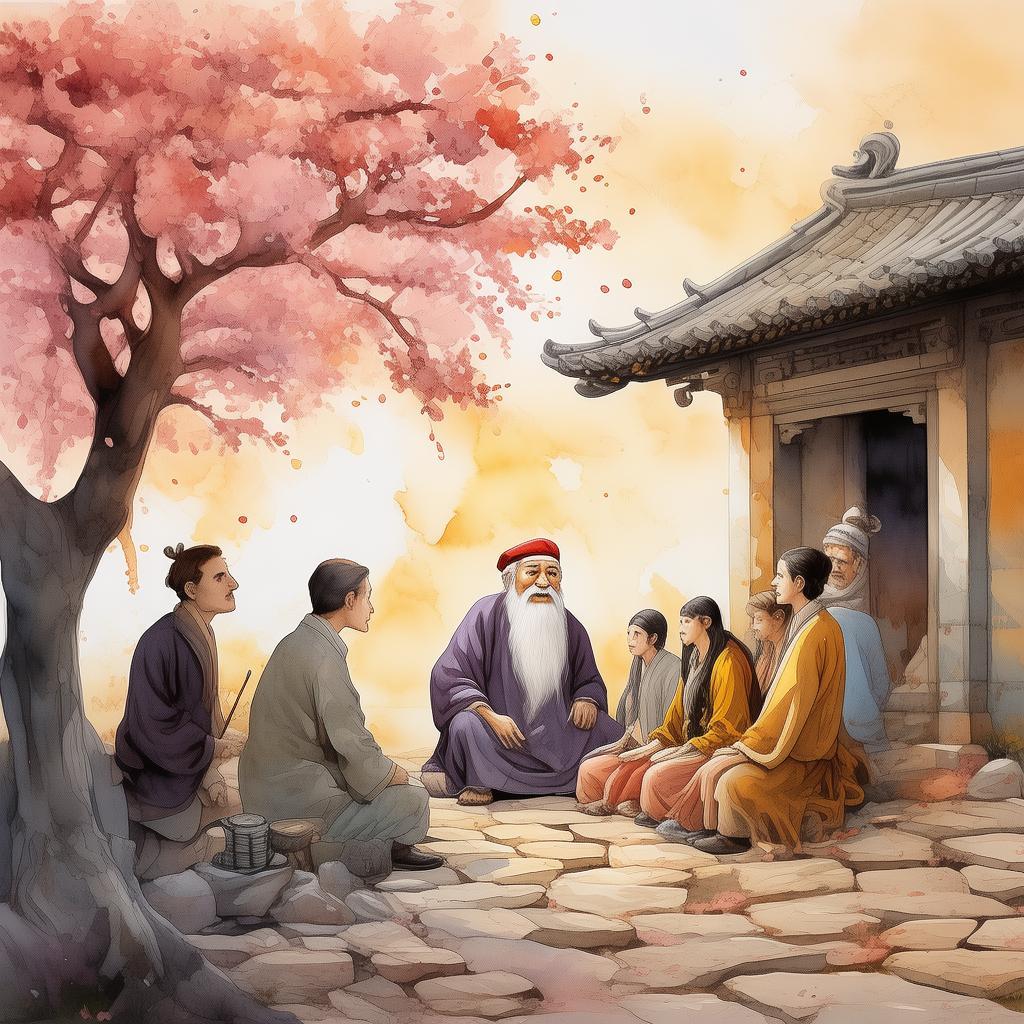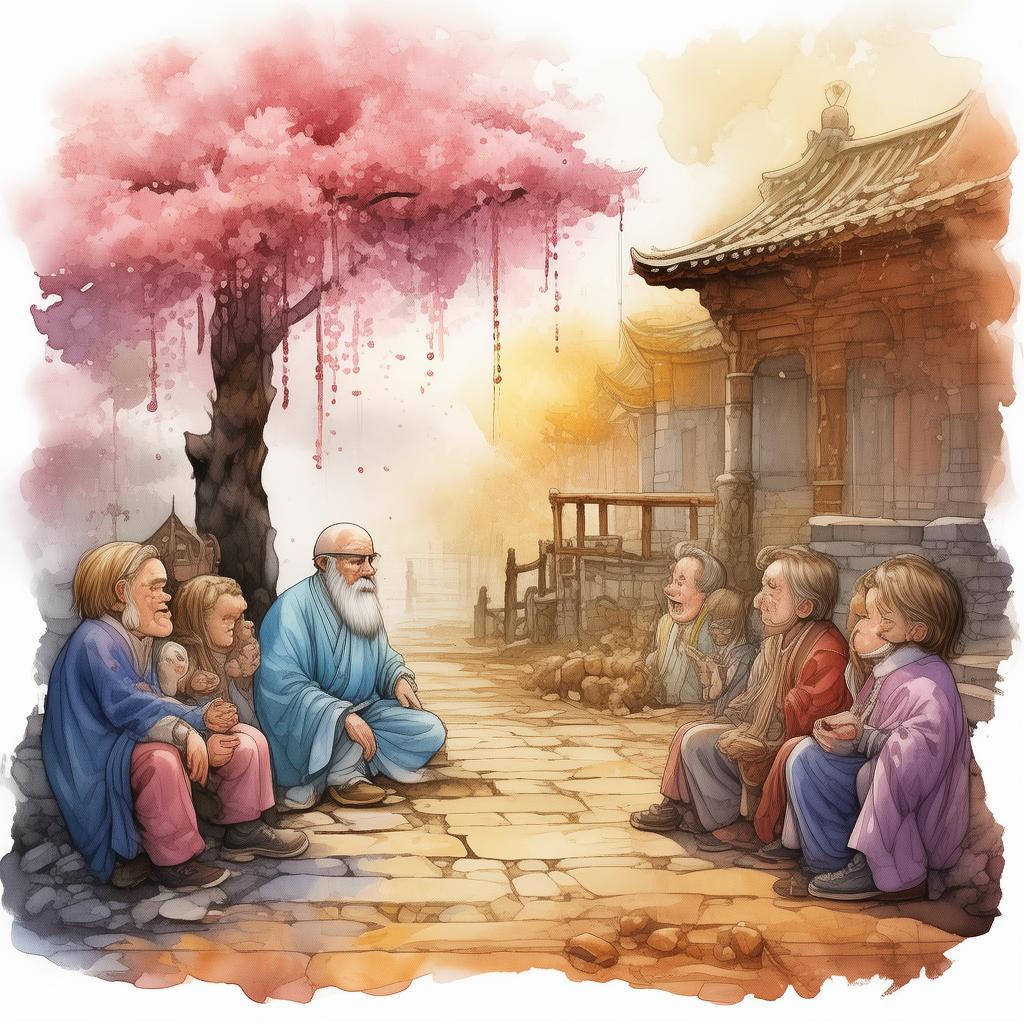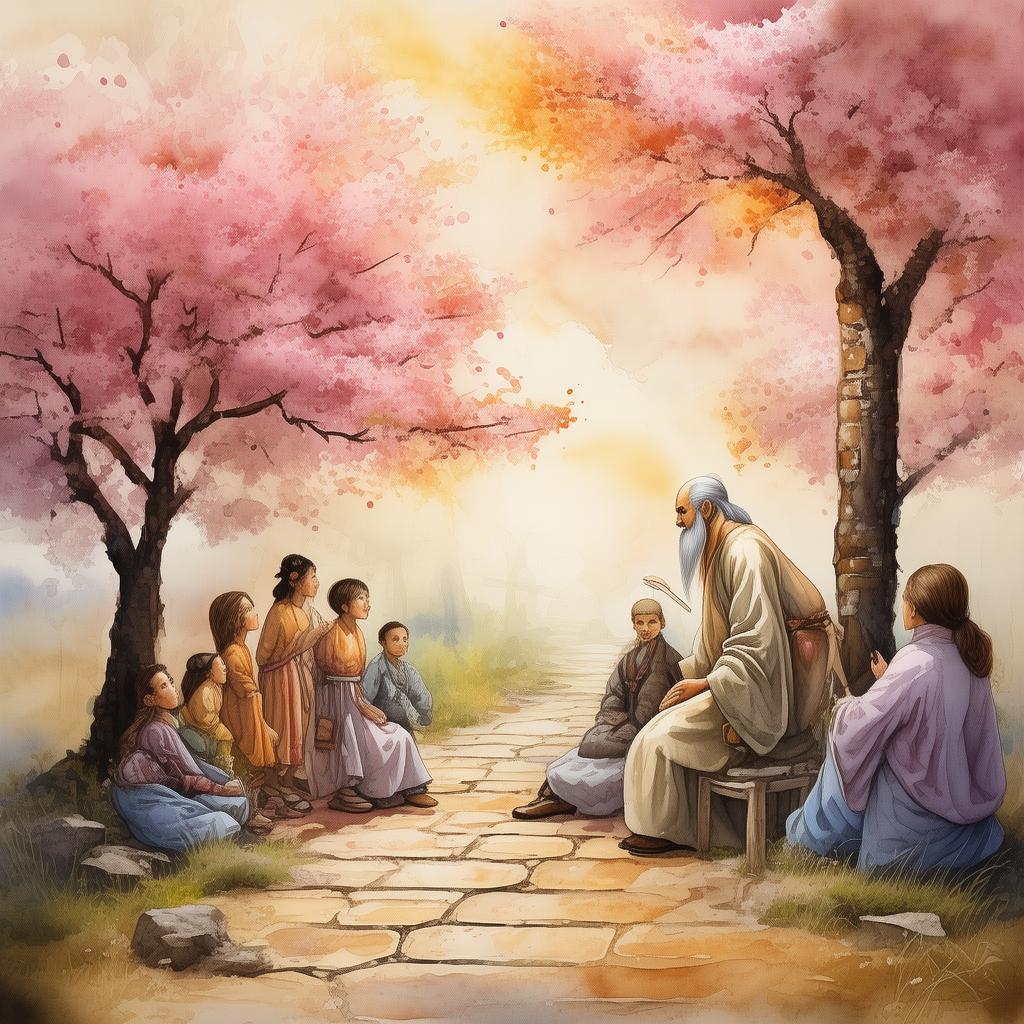The Scholar's Triangle: The Quest for Knowledge
In the heart of Zhejiang Province, where the mountains meet the sea, there was a legend of the Scholar's Triangle, a mystical place where the essence of knowledge was said to reside. It was a triangle formed by three great scholars, each representing a different aspect of learning: the Master of Literature, the Sage of Science, and the Prophet of Philosophy. The legend spoke of a quest that would unite these scholars and reveal the true nature of knowledge.
Three scholars, each a master in their own right, were chosen to embark on this quest. The Master of Literature, Zhang Wei, was known for his profound understanding of ancient texts and the wisdom they contained. The Sage of Science, Li Mei, was a brilliant mind, always seeking the truth through experimentation and observation. The Prophet of Philosophy, Wang Jun, was a deep thinker, pondering the nature of existence and the purpose of life.
The quest began with a riddle given to them by an ancient sage: "Seek the triangle where the rivers meet, and you shall find the essence of knowledge." The scholars set out, each with their own interpretations of the riddle.
Zhang Wei, the Master of Literature, believed the triangle was a metaphor for the interconnectedness of all knowledge. He traveled through ancient libraries, seeking the wisdom of the ages. Li Mei, the Sage of Science, thought the triangle was a physical place, perhaps a hidden laboratory or observatory. Wang Jun, the Prophet of Philosophy, saw the triangle as a state of mind, a place where one could achieve enlightenment through deep reflection.
Their paths crossed in the bustling city of Hangzhou, where they were to meet a mysterious guide who would lead them to the next clue. The guide, an old man with a twinkle in his eye, revealed that the triangle was not a physical place but a journey of self-discovery.
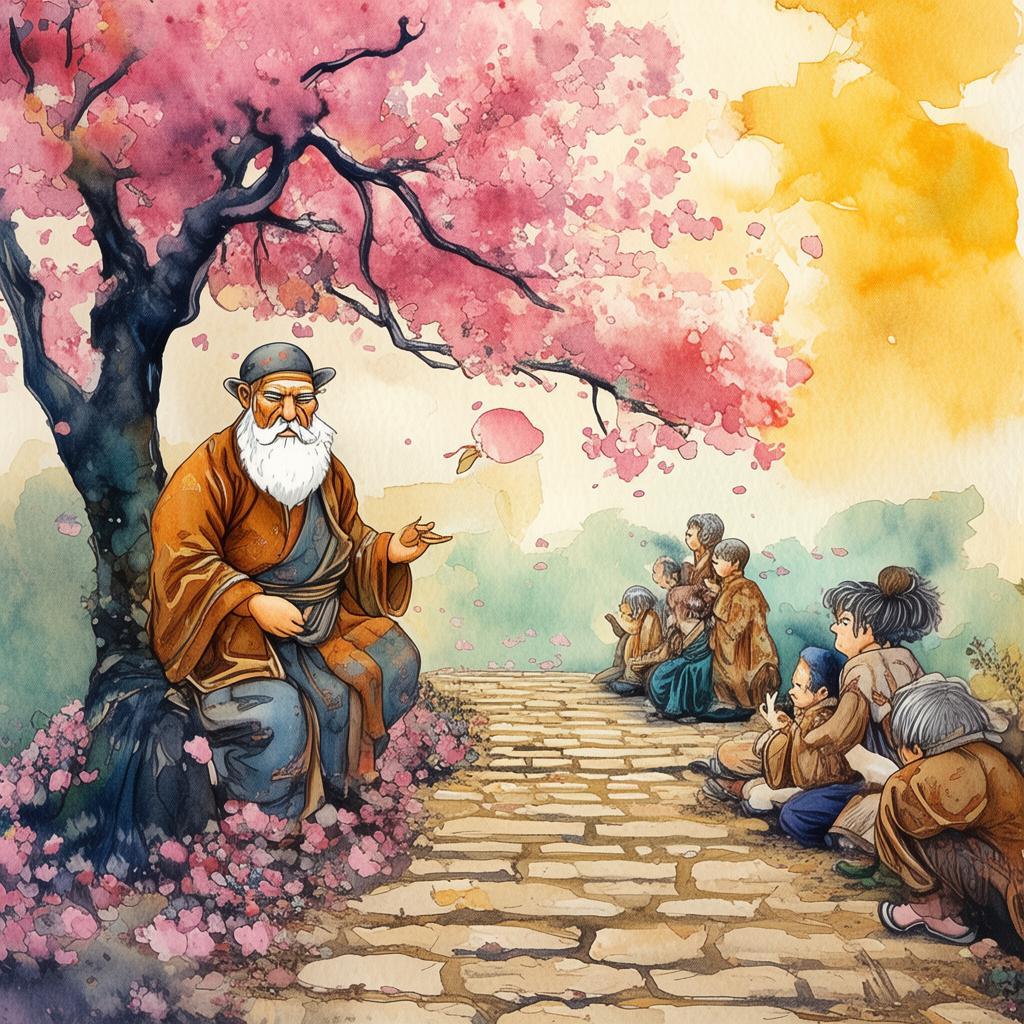
The scholars were given a series of trials to test their knowledge and understanding. The first trial was a riddle that required them to interpret a poem. Zhang Wei, relying on his literary knowledge, provided a detailed analysis of the poem's symbolism. Li Mei, however, pointed out that the poem was a metaphor for the scientific process, emphasizing the importance of observation and experimentation. Wang Jun added that the poem was also a philosophical reflection on the nature of truth and beauty.
The second trial was a puzzle involving a series of interconnected objects. Zhang Wei, recognizing the pattern, solved the puzzle using his knowledge of geometry. Li Mei, on the other hand, used his scientific understanding of cause and effect to unravel the puzzle. Wang Jun, seeing the puzzle as a metaphor for the interconnectedness of all things, provided a solution that combined elements of both literature and science.
The third trial was a test of character, where the scholars were asked to help a stranger in need. Zhang Wei, moved by the stranger's plight, offered his own resources to help. Li Mei, using his scientific knowledge, devised a practical solution to the stranger's problem. Wang Jun, recognizing the importance of empathy and compassion, provided emotional support to the stranger.
As they completed each trial, the scholars began to understand the true essence of the Scholar's Triangle. It was not a physical place or a single source of knowledge, but a journey that required them to integrate their different areas of expertise and apply them to the world around them.
The final trial was a test of their combined knowledge. They were given a complex problem that required a multidisciplinary approach. Zhang Wei, Li Mei, and Wang Jun worked together, combining their strengths to solve the problem. In the process, they realized that the essence of knowledge was not about mastering a single field but about understanding the interconnectedness of all knowledge.
The old guide, satisfied with their progress, revealed that the true essence of the Scholar's Triangle was a state of mind, a place where one could achieve enlightenment through the integration of knowledge. The scholars, having completed their quest, returned to their respective fields with a new understanding of the importance of interdisciplinary learning.
The Master of Literature, Zhang Wei, began to incorporate scientific and philosophical insights into his teachings. The Sage of Science, Li Mei, expanded his research to include the humanities and social sciences. The Prophet of Philosophy, Wang Jun, used his knowledge to promote a more holistic approach to education.
The legend of the Scholar's Triangle spread far and wide, inspiring generations of scholars to seek knowledge not just in their own fields but in the broader context of the world. And so, the essence of the Scholar's Triangle continued to live on, a reminder that true knowledge is found not in isolation but in the interconnectedness of all things.
✨ Original Statement ✨
All articles published on this website (including but not limited to text, images, videos, and other content) are original or authorized for reposting and are protected by relevant laws. Without the explicit written permission of this website, no individual or organization may copy, modify, repost, or use the content for commercial purposes.
If you need to quote or cooperate, please contact this site for authorization. We reserve the right to pursue legal responsibility for any unauthorized use.
Hereby declared.

